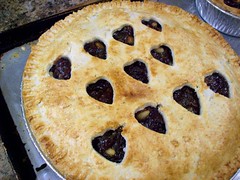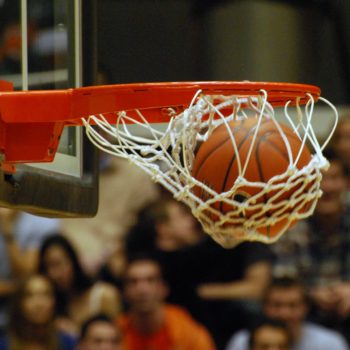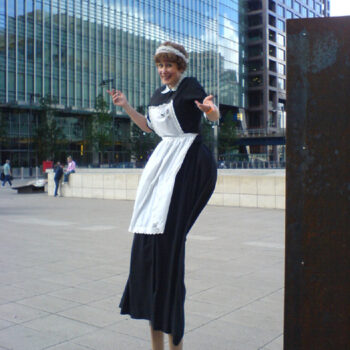As a member of the very large Oak Hill Track team I have many people asking me what events I do in the sport. I tell them that I mostly compete in the jumping events such as high jump, triple jump, and long jump. Now this always confuses the asker as track and field is not a very popular sport at Oak Hill and because of this, not many people understand what it entails. I am going to clear the events up in this article through somewhat brief descriptions and examples.
Track Events:
100m, 200m: These are the most basic running events consisting of much less strategy than some of the other events. In these events a person must sprint as fast as they can while practicing proper running form, keeping the knees high, and keeping low to the ground while speeding up to the top speed.
400m, 800m: These events are classified as mid-distance and are easily some of the most tiring races because of the speed required. Rather than sprinting at the top speed for the duration of the race, an athlete must save his/her energy for the last portion of the race, especially in the 800m. Four hundred meters is a quarter of a mile and a sophomore from Lewiston high school may break the state record of 48.58s this year. He also holds the half mile, 800m, class A record as a freshman with a time of 1:54.17.
1600m, 3200m: The longest distance events of 1 mile and 2 mile are more about strategy than anything. The fastest runners of the race will likely not even stay in front of the pack until the last lap in order to conserve energy. They stay behind the other competitors to draft them, similar to NASCAR. By letting the other runners run against the wind they wait to boost ahead of everybody else. In this way the state class B record for the mile was broken last year with a time of 4:14.
110m Hurdles, 300m Hurdles: The hurdles are metal and plastic L-shaped devices that are designed to fall over if a person accidentally hits one of them. The goal is to run over the hurdles without jumping them and hitting the ground as quickly as possible to continue running at top speed.
1600m Racewalk: This is way too complex to describe, basically it is one mile of walking very fast and moving your hips very strangely.
4×100, 4×400, 4×800: The 4 stands for the number of people on the relay team as each person travels the listed distance while holding a baton and handing it to the next person on the team. The total time of the relay team is the time it takes from the first person starting to run to the last person crossing the finish line.
Field Events:
Long Jump: In the most basic jumping event and athlete sprints at their top speed and attempts to jump as far as possible. The form in the air can range from a “hang” where the jumper spreads his/her body out like a sail before reaching for extra distance to a hitch-kick where the jumper attempts to run in the air. Both of these actions work to keep the athlete upright so that he or she does not fall over too quickly.
Triple Jump: The triple jump is similar to the long jump in that the athlete runs and jumps as far as possible although like the name suggests, there are three jumps. The jumps are measured from the first jump which is a hop and the jumper must land on the same foot as he took off from. The next jump is a step where the athlete lands on the opposite foot afterwards. The final jump is into the pit off of the foot that the athlete just jumped off of. Because of this the triple jump marks are usually about twice as far as those of long jump.
High Jump: My favorite event, high jump, involves a run-up in a straight line to build speed before making an arc toward the mat. The athlete takes off of the foot furthest away from the mat and twists so that the back faces the bar and clears the height.
Pole Vault: The athlete in this event sprints while holding a 10’-20’ pole which is planted into the ground. The vaulter then propels himself into the air using the elasticity of the pole to gain height and this allows him to reach heights of over 19’ at a world class level.
Discus: This is one of three throwing events and involves a person holding onto a weighted disc that is thrown after spinning in a circle two and a half times.
Shotput: The second throwing event involves a person holding a large metal ball about 10 lbs that is held against the cheek and then a fluid motion pushing motion causes the shot to fly away from the body.
Javelin: The third and coolest throwing event in my opinion is the javelin simply because it involves throwing a giant spear. The javelin is about eight feet long and weighs around one pound. It is essentially a spear that is thrown after a few short steps are taken to gain power. The javelin is thrown the farthest out of all projectiles in the track and field throwing events and throwing it 100 feet is fairly easy to accomplish compared to the discus and shot.








2 Comments
Informative, while keeping the piece entertaining and fairly brief. This clears up all the confusion surrounding the events and I’m sure will save you some agitation from explaining to other students that, yes, we have kids participating in track and field, and what it is exactly that they do.
Very informative! While I knew the basics of track and field I didn’t know much else so reading about the full in depth talk of how it works was awesome! I can actually understand most of what you talk about now when you talk about track and field. Great job Derek I’m proud of you!